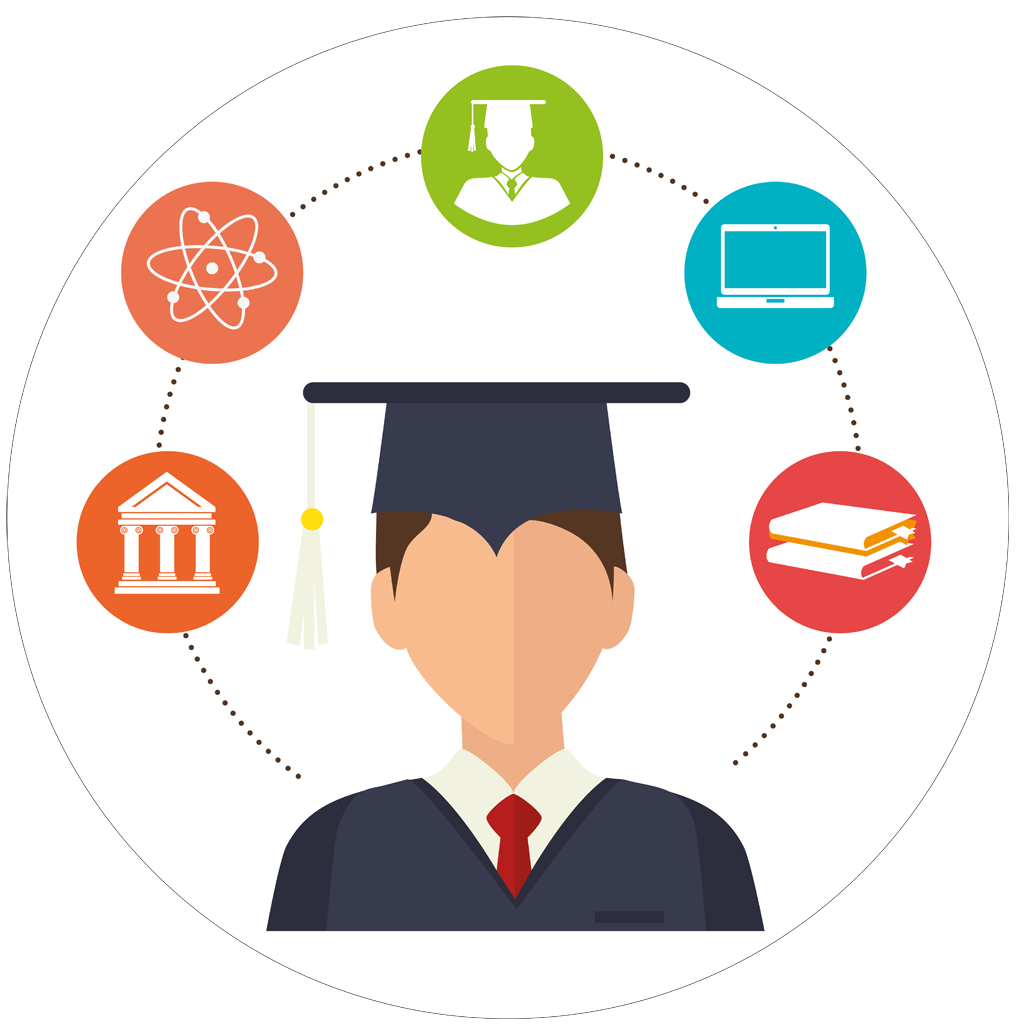Is it Possible to Achieve a Debt Free Degree? Discover strategies and insights on obtaining a college education without student loans in this informative post.
In today’s increasingly competitive job market, the burden of student loan debt weighs heavily on the minds of countless individuals striving to obtain a higher education. With the rising costs of tuition and living expenses, many students fear being crippled by the financial obligations that come with pursuing a degree. However, within this challenging scenario, there is still hope. This article explores the possibility of achieving a debt-free degree and provides valuable insights and strategies on how to make it a reality.
1. Understanding the concept of a Debt Free Degree
1.1 What is a debt free degree?
A debt free degree refers to obtaining a college education without relying on student loans or accumulating debt. It means graduating with a degree and not being burdened by the financial stress of loan repayments. Instead, it involves seeking out other avenues to fund your education, such as scholarships, grants, work-study programs, and affordable college choices.
1.2 Importance of a debt free degree
A debt free degree is of great significance because it allows students to start their professional lives without the weight of student loan debt holding them back. With the rising cost of higher education and the student loan debt crisis, achieving a debt free degree is becoming increasingly important. By avoiding student loans, individuals have the freedom to pursue their desired career paths, start saving for the future, and achieve financial independence at a faster rate.
2. Exploring the Challenges of Paying for College
2.1 Rising cost of higher education
The cost of higher education has been steadily increasing, making it more challenging for students and their families to afford college. Tuition fees, textbooks, housing, and other expenses can add up quickly, creating a financial burden. This surge in cost has made it crucial for students to explore various strategies for reducing or eliminating their college expenses.
2.2 Student loan debt crisis
The student loan debt crisis is a major concern facing many individuals who pursue higher education. The total outstanding student loan debt in the United States has reached staggering levels, with many graduates burdened by substantial loan repayments. This crisis has restricted graduates’ financial freedom, making it difficult for them to invest in assets, save for the future, or achieve other life goals. It highlights the importance of finding alternatives to minimize or eliminate student loan debt.
2.3 Financial barriers to obtaining a degree
Many individuals face significant financial barriers that impede their ability to obtain a degree. These barriers can include lack of access to funds for tuition, limited scholarship opportunities, and inadequate knowledge about various financial resources. Overcoming these barriers is crucial to ensure that individuals have equitable access to higher education and the opportunity to pursue their desired careers.
3. Strategies for Achieving a Debt Free Degree
3.1 Scholarships and Grants
Scholarships and grants are excellent resources for funding a debt free degree. They can be merit-based, need-based, or focused on specific areas of study. To maximize scholarship and grant opportunities, it is essential to research and apply for various programs. This includes local community scholarships, national scholarships, and scholarships offered by colleges and organizations related to the student’s chosen field of study.
3.2 Work-Study Programs
Work-study programs provide an opportunity for students to work part-time while attending college to offset the cost of their education. These programs are often available through the college or university, and they offer employment opportunities that align with the student’s academic or career goals. By participating in work-study programs, students can earn income to cover their expenses while gaining valuable work experience.
3.3 Choosing an Affordable College
Selecting an affordable college can significantly contribute to achieving a debt free degree. It is essential to research and compare tuition fees, living costs, and available financial aid options at different institutions. In-state public colleges, community colleges, and online programs are often more cost-effective choices. By choosing a college that aligns with your academic goals and financial situation, you can minimize the need for student loans.
3.4 Community College and Transfer Pathways
Attending community college for the first two years and then transferring to a four-year institution offers a cost-effective way to obtain a degree. Community colleges generally have lower tuition fees, making it easier to cover the expenses without relying on loans. Transferring credits to a four-year college allows students to complete their degree while significantly reducing their overall educational expenses.
3.5 Dual Enrollment Programs
Dual enrollment programs enable high school students to take college-level courses while still in high school. These programs, often in partnership with local colleges or universities, provide an opportunity to earn both high school and college credit simultaneously. By taking advantage of dual enrollment programs, students can complete some college courses before graduating from high school, reducing the amount of time and money needed to obtain a degree.
4. Maximizing College Savings and Investments
4.1 529 College Savings Plans
A 529 college savings plan is a tax-advantaged investment account specifically designed to save for future higher education expenses. Contributions to a 529 plan grow tax-free, and withdrawals used for qualified educational expenses are also tax-free. By starting a 529 plan early and consistently contributing to it, you can build a substantial amount of money to help finance your education without borrowing.
4.2 Individual Retirement Accounts (IRAs)
While IRAs are primarily retirement savings accounts, they can also be a useful tool for funding higher education expenses. Roth IRAs, in particular, allow penalty-free withdrawals for qualified educational expenses. By contributing to an IRA throughout your working years, you can take advantage of potential tax savings and have an additional source of funds to draw from when pursuing a debt free degree.
4.3 Education Savings Accounts (ESAs)
Education Savings Accounts, also known as Coverdell Education Savings Accounts, are another tax-advantaged investment option for education expenses. Like 529 plans, contributions grow tax-free, and withdrawals for qualified educational expenses are also tax-free. ESAs have lower contribution limits compared to 529 plans but offer more flexibility in terms of what expenses can be covered. By utilizing an ESA, you can accumulate funds specifically earmarked for educational purposes.
4.4 High-Yield Savings Accounts
High-yield savings accounts can be an effective tool for maximizing college savings. These accounts offer higher interest rates than traditional savings accounts, allowing your money to grow more rapidly. By consistently depositing funds into a high-yield savings account, you can accumulate a significant amount over time to help offset the cost of your education.
5. Leveraging Income and Expenses during College Years
5.1 Managing expenses and budgeting
Managing expenses and creating a budget is crucial during the college years. By tracking your income and expenditures, you can identify areas where cost-cutting measures can be implemented. This may include cutting unnecessary expenses, finding more affordable housing options, cooking meals at home instead of dining out, and utilizing student discounts for various services and products.
5.2 Part-time and summer jobs
Taking on part-time jobs during the academic year and securing summer jobs can provide additional income to cover college expenses. By effectively managing your workload and schedule, you can balance work and academic obligations without compromising your performance in either area. Part-time and summer jobs can also provide valuable work experience that can enhance your resume and future job prospects.
5.3 Cooperative educational programs
Cooperative educational programs, also known as co-op programs, integrate periods of full-time work experience with academic coursework. These programs allow students to earn income while gaining practical skills related to their field of study. By participating in a co-op program, you can earn money to help finance your education while also developing valuable industry connections and enhancing your employability upon graduation.
5.4 Internships and apprenticeships
Internships and apprenticeships offer students the opportunity to gain practical work experience in their chosen field while receiving training and mentorship. While some internships are unpaid, many companies offer paid internships and apprenticeships. By securing paid positions, you can earn income to cover your expenses while obtaining valuable hands-on training that can enhance your job prospects after graduation.
6. Balancing Academics and Work Opportunities
6.1 Managing course load and work schedule
Balancing your course load and work schedule is essential to ensure academic success while reaping the benefits of work opportunities. It is crucial to develop effective time management skills and create a schedule that allows for adequate study time alongside work commitments. By planning your coursework and work hours strategically, you can avoid unnecessary stress and successfully navigate both academic and work-related responsibilities.
6.2 Prioritizing academics
While pursuing work opportunities is important for funding your education, it is equally important to prioritize academics. Remember that the primary goal of attending college is to obtain a degree and gain knowledge in your chosen field. Be mindful of your academic deadlines, commitments, and coursework requirements. This ensures that your academic performance remains strong, allowing you to maximize your educational experience and increase your future career prospects.
6.3 Seeking academic support and resources
To successfully balance academics and work opportunities, it is essential to take advantage of the academic support and resources available to you. This may include seeking guidance from professors, utilizing tutoring services, joining study groups, and attending academic workshops. These resources can help you navigate any challenges you may encounter and ensure that you are able to excel academically while simultaneously working to fund your education.
7. Alternative Paths to Obtain Higher Education
7.1 Online education and MOOCs
Online education and Massive Open Online Courses (MOOCs) offer alternative paths to obtain higher education. Many reputable universities and educational platforms offer online degree programs and courses that provide flexibility in terms of schedule and location. Online education can be more cost-effective and allows individuals to continue working while pursuing their degree. MOOCs, on the other hand, offer opportunities to learn specific subjects or skills without enrolling in a full degree program.
7.2 Vocational and trade schools
Vocational and trade schools provide specialized training for specific careers or industries. Attending a vocational or trade school allows individuals to acquire the skills and knowledge necessary for their chosen profession without the burden of a traditional four-year degree. These programs are often more affordable and have shorter durations, enabling individuals to enter the workforce sooner and avoid excessive educational expenses.
7.3 Military service
Military service offers an alternative path to obtaining higher education through programs such as the GI Bill. Active duty servicemembers and veterans can potentially receive financial support for their education, including funding for tuition, housing, and books. By serving in the military, individuals can gain valuable skills and experiences while also receiving financial assistance to pursue a debt free degree.
7.4 Employer tuition assistance programs
Many employers offer tuition assistance programs as part of their employee benefits package. These programs provide financial support for employees to pursue higher education while working full-time. By taking advantage of employer tuition assistance programs, individuals can earn a salary, gain work experience, and have their educational expenses covered. This can significantly reduce or eliminate the need for student loans.
8. Seeking Financial Aid and Loan Alternatives
8.1 FAFSA and other forms of financial aid
Completing the Free Application for Federal Student Aid (FAFSA) is crucial for accessing various forms of financial aid, including federal grants, work-study opportunities, and loans with favorable terms. By providing information about your financial situation, the FAFSA determines your eligibility for different types of aid. It is important to explore all available financial aid options and leverage them before considering loans.
8.2 Federal work-study programs
Federal work-study programs provide employment opportunities for students with financial need. These programs allow students to work part-time on campus or with approved off-campus employers while attending college. By participating in a federal work-study program, individuals can earn income to help cover their educational expenses, reducing the need for loans.
8.3 Tuition reimbursement through employers
Some employers offer tuition reimbursement as part of their employee benefits. Tuition reimbursement programs typically involve the employer reimbursing a portion or all of an employee’s tuition expenses upon successful completion of approved courses or programs. By working for an employer that offers tuition reimbursement, individuals can pursue higher education while minimizing or eliminating the need for student loans.
Income Share Agreements (ISAs) are a relatively new alternative to traditional student loans. With an ISA, a student receives funding for their education in exchange for a percentage of their future income. This means that students do not have to repay a fixed loan amount but instead contribute a portion of their earnings for a predetermined period. ISAs provide flexibility and align the repayment obligation with a student’s post-graduation income.
8.5 Crowd-sourced funding platforms
Crowd-sourced funding platforms, such as GoFundMe or Kickstarter, can be utilized to raise funds for educational expenses. By creating a compelling campaign and sharing it with family, friends, and the wider community, individuals can seek financial support for their education. These platforms allow for contributions of varying sizes, making them accessible to individuals in different financial situations. While not guaranteed, crowd-sourced funding can provide a significant boost towards achieving a debt free degree.
9. Managing and Minimizing Student Loan Debt
9.1 Understanding loan options and terms
If taking out student loans becomes necessary, it is crucial to thoroughly understand the different loan options and their terms. Federal loans, such as Stafford loans or Perkins loans, generally offer more favorable terms compared to private loans. Understanding the interest rates, repayment periods, and repayment plans associated with each loan option will help individuals make informed decisions and minimize the long-term impact of student loan debt.
9.2 Tips for minimizing student loan debt
To minimize student loan debt, individuals can employ various strategies. These include living frugally, applying for scholarships and grants, working part-time during college, and pursuing alternative educational paths, such as attending a community college before transferring to a four-year institution. Additionally, individuals should consider borrowing only the amount needed and exploring loan forgiveness or repayment assistance programs that may be available post-graduation.
9.3 Loan forgiveness and repayment assistance programs
Loan forgiveness and repayment assistance programs can provide relief for individuals burdened by student loan debt. These programs offer various options, such as public service loan forgiveness, income-driven repayment plans, and state-specific loan repayment assistance programs. By researching and understanding these programs, individuals can explore options to reduce or eliminate their student loan debt over time.
10. Building a Sustainable Financial Plan Beyond Graduation
10.1 Creating a post-graduation budget
Upon graduation, it is essential to create a post-graduation budget that accounts for living expenses, loan repayments, and saving for the future. By carefully planning and allocating your income, you can ensure that you continue to live within your means and can comfortably manage your financial obligations.
10.2 Strategies for debt repayment
To effectively manage and repay student loan debt, individuals should consider strategies such as the snowball or avalanche method. The snowball method involves focusing on paying off the smallest debt first while making minimum payments on other debts. The avalanche method prioritizes paying off debts with the highest interest rate first. By selecting a repayment strategy that aligns with your financial situation and goals, you can make steady progress towards eliminating your student loan debt.
10.3 Utilizing income-based repayment plans
Income-driven repayment plans are a viable option for individuals who have difficulty meeting their monthly loan payments after graduation. These plans adjust your loan payments based on your income and family size, making them more manageable. By enrolling in an income-driven repayment plan, you can ensure that your loan payments remain affordable, allowing you to allocate your income towards other financial goals.
10.4 Building an emergency fund
Building an emergency fund is crucial to protect yourself from unexpected financial hardships after graduation. Set aside a portion of your income regularly to cover any unforeseen expenses, such as medical emergencies or car repairs. By having an emergency fund, you can avoid relying on credit cards or taking out additional loans, which can further exacerbate your financial situation.
In conclusion, achieving a debt free degree is possible by utilizing various strategies and resources. By exploring alternative funding options, maximizing savings and investments, leveraging income and expenses, balancing academics and work, considering alternative educational paths, seeking financial aid and loan alternatives, managing student loan debt, and building a sustainable financial plan post-graduation, individuals can obtain a degree without the burden of excessive student loan debt. With careful planning and dedication, you can pave the way to a debt free future and set yourself up for long-term financial success.


